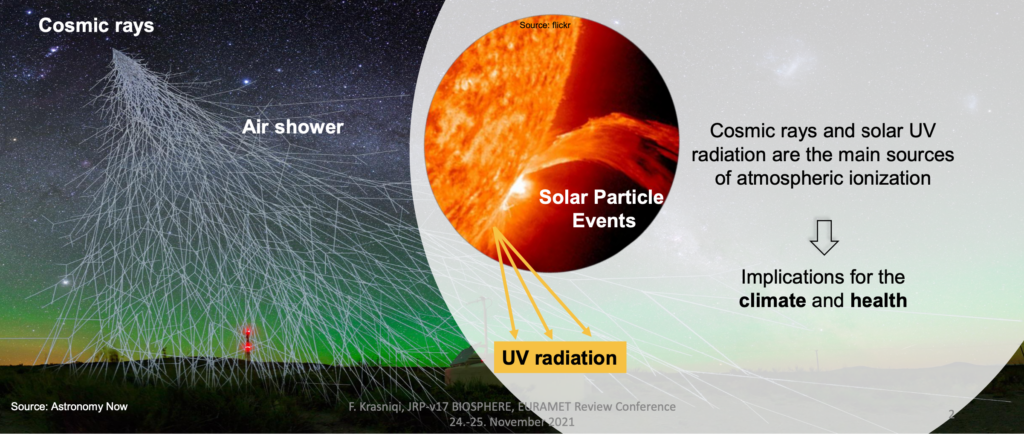The ozone layer shields us from solar UV, radiation which can cause serious health effects in humans, as well as some plants and animals.In the last 50 years, anthropogenic activities have altered atmospheric chemistry such that primary cosmic rays (PCRs) – high energy particles from the sun and other extra-terrestrial sources – are now increasing depletion of this protective layer. On contact with the atmosphere, PCRs also generate secondary cosmic rays (SCR) and both types are known to adversely affect biological systems. Understanding the link between cosmic rays, solar radiation, and ozone thickness is critical for making informed decisions regarding the effects of these on human health. However, to date, no side-by-side measurements of these factors have been performed due to a lack of measurement infrastructure.
To address this, the project will upgrade existing SCR and atmosphere detectors, developing new methods to determine the dependence of SCR flux to the ground on PCR and linking this to atmospheric parameters such as temperature, density, and aerosol concentration. The impact of PCRs and ground UV radiation on the ozone layer will be correlated and quantified, including their dependence on anthropogenic emissions. The effects on human health of combined SCR and UV radiation will be assessed by using human and plant cells via established radiation effect models and systems biology approaches. For the first time, key information on the effects of cosmic rays, UV and human activities on the ozone layer will be available, helping Europe to introduce better mitigation strategies in this important area.

